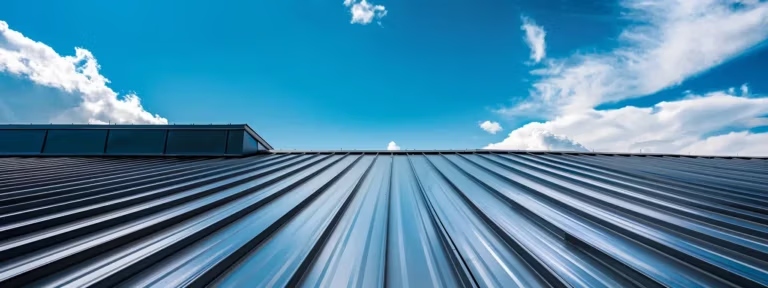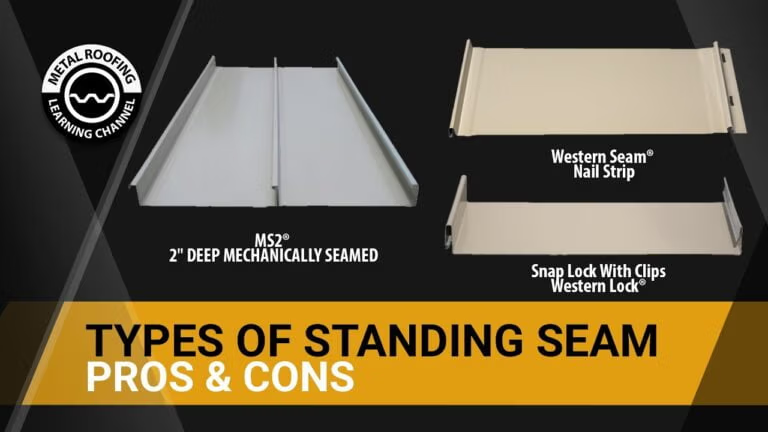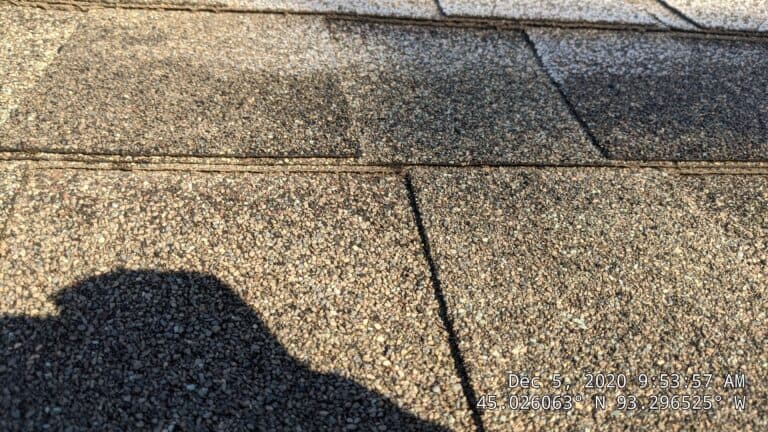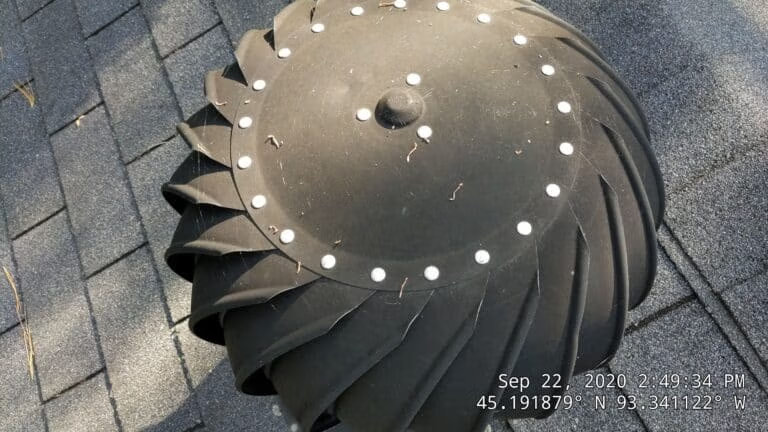Table Of Contents:
- Recognizing the Significance of Proper Attic Ventilation
- Assessing Your Attic’s Current Ventilation System
- Calculating Your Attic’s Ventilation Requirements
- Selecting the Appropriate Ventilation Solutions
- Implementing Your Ventilation Plan
- Maintaining Effective Attic Ventilation Over Time
- Conclusion
Is your attic causing you problems with excessive heat, moisture, or high energy bills? Proper attic ventilation is crucial for maintaining your home’s comfort and efficiency. In this guide, we’ll show you how to assess your current ventilation system, calculate your attic‘s needs, and choose the right solutions. You’ll learn to prevent condensation, protect your ceiling, and potentially extend your roof‘s warranty. By understanding ventilation requirements per square foot, you’ll be equipped to create an effective system that aligns with green building practices.
Recognizing the Significance of Proper Attic Ventilation
Proper attic ventilation is crucial for maintaining a healthy home. We’ll explore how it impacts energy efficiency by regulating heat transfer, prevents moisture and mold issues that can affect your eaves, and protects roofing materials from damage. Understanding ventilation needs per cubic foot of attic space is essential, especially as climate change influences our approach to home maintenance and debris management.
The Impact on Energy Efficiency
We understand that proper attic ventilation significantly impacts energy efficiency in your home. By regulating heat transfer, a well-designed exhaust system can help maintain a comfortable temperature in your living spaces while reducing the strain on your HVAC system. This is especially crucial in varying climates, where efficient ventilation can lead to substantial energy savings.
An optimized attic ventilation system plays a vital role in preventing ice dams on your roof during winter months. These dams can cause extensive damage to your roofing materials and compromise your home’s structural integrity. By maintaining a consistent temperature across your roof‘s surface, proper ventilation helps mitigate this risk and extends the lifespan of your roofing components. ventilator
As roofing professionals, we always adhere to the International Building Code when designing attic ventilation systems. This ensures that your home meets or exceeds industry standards for energy efficiency. By implementing the right balance of intake and exhaust vents, we can create an optimal airflow that enhances your home’s overall energy performance and comfort levels.
Preventing Moisture and Mold Issues
We know that effective attic ventilation is crucial in preventing moisture and mold issues. Proper airflow, facilitated by a well-designed passive ventilation system, helps regulate humidity levels in your attic space. This is particularly important for homes with hip roofs, where ventilation can be more challenging.
In our experience, a combination of ridge vents and soffit vents creates an optimal airflow pattern that effectively removes excess moisture. This setup helps prevent condensation on your roof trusses, which can lead to mold and mildew growth if left unchecked. Regular inspections of these components are essential to ensure they remain clear of debris and function properly.
We’ve found that addressing moisture issues early can prevent costly repairs down the line. Here are some key steps we recommend for maintaining a dry, mold-free attic:
- Ensure proper insulation to prevent warm air from entering the attic space
- Install and maintain effective ventilation systems, including ridge vents and soffit vents
- Regularly inspect for signs of moisture or mold growth
- Address any roof leaks promptly to prevent water infiltration
- Consider using a dehumidifier in particularly humid climates
Protecting Roofing Materials From Damage
We understand that proper attic ventilation plays a crucial role in protecting your roofing materials from damage. By maintaining optimal temperature and moisture levels in your attic area, we help prevent the formation of mold and extend the life of your building materials. This not only preserves your roof‘s integrity but also contributes to overall energy efficiency.
Our experience has shown that inadequate ventilation can lead to premature aging of shingles and underlayment. We often recommend installing a wind turbine or other mechanical ventilation systems to enhance air circulation, especially in areas with limited natural airflow. This proactive approach can significantly reduce the risk of heat-related damage to your roofing components.
We’ve found that proper attic ventilation also helps prevent ice dams in colder climates. By maintaining a consistent roof temperature, we minimize the risk of snow melting and refreezing at the eaves, which can cause significant damage to your roofing materials. Our team ensures that your attic‘s ventilation system is tailored to your specific climate and roof design for optimal protection.
Assessing Your Attic‘s Current Ventilation System
We’ll guide you through assessing your attic‘s current ventilation system. We’ll identify existing vent types, including turbines and wind-driven options, recognize signs of inadequate ventilation like leaks, and measure your attic space for precise calculations. Understanding your intake needs and current setup is crucial for determining ideal ventilation requirements.
Identifying Existing Vent Types
We begin by thoroughly inspecting your attic to identify the existing vent types. Common types include ridge vents, soffit vents, gable vents, and roof ventilators. Each serves a specific purpose in maintaining proper airflow and preventing issues like ice dams.
Our team assesses the ratio of intake to exhaust vents, ensuring it aligns with your attic‘s architecture and length. This balance is crucial for effective ventilation, as improper ratios can lead to inadequate air circulation and potential moisture problems.
We pay special attention to the condition and placement of each ventilator. Damaged or improperly installed vents can compromise your entire ventilation system, leading to energy inefficiency and potential roof damage. Our expertise allows us to recommend improvements or replacements as needed.
Signs Your Attic Lacks Adequate Ventilation
We often encounter attics with inadequate ventilation during our inspections. One clear sign is excessive heat buildup, which we can detect by measuring the temperature difference between the attic and outdoor air. If this difference exceeds 10-20 degrees Fahrenheit, it indicates poor airflow and potential energy efficiency issues.
Moisture problems are another telltale sign of insufficient ventilation. As experienced roofers, we look for water stains, mold growth, or damp insulation in the attic space. These issues not only violate building codes but can also lead to structural damage if left unaddressed.
We also examine the attic‘s dimension and layout to assess ventilation adequacy. In homes with gable roofs, we often find that existing vents are improperly sized or placed, leading to stagnant air pockets. By conducting a thorough evaluation, we can recommend the most effective ventilation solutions tailored to your specific attic configuration.
Measuring Attic Space for Accurate Calculations
We begin our attic assessment by accurately measuring the space to determine ventilation needs. Using specialized tools, we calculate the attic‘s square footage, considering the roofing structure and any unique architectural features. This precise measurement forms the foundation for determining the appropriate number and type of vents required for optimal airflow.
Our construction experience has taught us that factors like snow load and attic insulation significantly impact ventilation requirements. We evaluate the roofing materials and local climate conditions to ensure our calculations account for potential snow accumulation, which can affect ventilation efficiency. This comprehensive approach allows us to design a ventilation system that performs well year-round.
We pay close attention to existing features like louvers and soffit vents when measuring the attic space. These elements influence air intake and exhaust, crucial for maintaining a balanced ventilation system. By considering all these factors, we can provide an accurate assessment of your attic‘s ventilation needs and recommend the most effective solutions for your specific roofing configuration.
Calculating Your Attic‘s Ventilation Requirements
We’ll guide you through calculating your attic‘s ventilation requirements. We’ll cover understanding ventilation ratios, determining total net free area needed, balancing intake and exhaust components, and using calculation tools. Our expertise in managing airflow, humidity, and temperature in various roof types, including hip and ridge designs, ensures optimal ventilation for your attic space.
Understanding Ventilation Ratios (1:150 and 1:300 Rules)
We understand that ventilation ratios are crucial for maintaining a healthy attic environment. The 1:150 rule applies to attics with a vapor barrier, requiring 1 square foot of ventilation for every 150 square feet of attic floor space. During our inspections, we often find that attics without a vapor barrier need more ventilation, following the 1:300 rule.
Our experience has shown that roof pitch plays a significant role in determining the appropriate ventilation ratio. Steeper pitches often require more ventilation due to increased air volume. We carefully assess your roof‘s pitch during our inspection to ensure we recommend the optimal ventilation solution for your specific attic configuration.
When evaluating soffit ventilation, we consider the question, “can you have too much attic ventilation?” While it’s rare, excessive ventilation can sometimes lead to issues. We strike a balance, ensuring adequate airflow without compromising your attic’s insulation or energy efficiency. Our goal is to create an optimal environment that protects your roof and maintains a comfortable living space below.
Determining the Total Net Free Ventilation Area Needed
We determine the total net free ventilation area needed by calculating the attic‘s square footage and applying the appropriate ventilation ratio. For most attics, we use the 1:300 rule, which requires 1 square foot of ventilation for every 300 square feet of attic floor space. This calculation ensures proper airflow and helps prevent moisture-related issues.
Our team considers factors like roof pitch and existing ventilation when determining the total net free area. We’ve found that steeper roofs often require additional ventilation due to increased air volume. By accurately measuring these elements, we can provide a precise ventilation solution tailored to your specific attic configuration.
We always ensure that the ventilation system we design meets or exceeds local building codes. Our calculations take into account the unique characteristics of your roof, including any architectural features that may affect airflow. This comprehensive approach allows us to create an optimal ventilation system that effectively manages temperature and moisture in your attic space.
Balancing Intake and Exhaust Ventilation Components
We always emphasize the importance of balancing intake and exhaust ventilation components in attic systems. Our approach ensures that the amount of air entering the attic through soffit vents matches the air exiting through ridge vents or other exhaust points. This balance is crucial for creating effective airflow and preventing moisture buildup.
In our experience, many homeowners overlook the significance of proper intake ventilation. We recommend installing continuous soffit vents along the eaves to provide adequate air intake. This setup, combined with ridge vents or roof vents, creates a natural convection current that efficiently moves air through the attic space.
When designing ventilation systems, we consider factors such as roof pitch, attic size, and local climate conditions. Our goal is to create a customized solution that optimizes airflow and energy efficiency. Here’s a list of key components we typically include in a balanced attic ventilation system:
- Continuous soffit vents for air intake
- Ridge vents or roof vents for exhaust
- Baffles to ensure clear airflow paths
- Gable vents for additional air circulation (if needed)
- Proper insulation to maintain temperature control
Utilizing Ventilation Calculation Tools
We rely on advanced ventilation calculation tools to accurately determine your attic‘s ideal airflow needs. These tools consider factors like attic dimensions, roof pitch, and local climate conditions to provide precise recommendations. By inputting specific data about your home, we can generate tailored solutions that optimize energy efficiency and prevent moisture-related issues.
Our team uses industry-standard software to perform complex calculations quickly and accurately. This technology allows us to model different ventilation scenarios and select the most effective solution for your unique attic configuration. We often compare results from multiple tools to ensure the highest level of accuracy in our recommendations.
To illustrate the effectiveness of these tools, here’s a comparison of manual calculations versus software-assisted results:
| Calculation Method | Time Required | Accuracy | Customization |
|---|---|---|---|
| Manual Calculation | 1-2 hours | Good | Limited |
| Software-Assisted | 15-30 minutes | Excellent | Highly Customizable |
Selecting the Appropriate Ventilation Solutions
We’ll guide you through selecting appropriate ventilation solutions for your attic. We’ll compare different types of intake vents, explore exhaust vent options, consider climate and environmental factors, and choose products that meet building codes. Our expertise ensures you’ll find the ideal ventilation system for your specific attic needs.
Comparing Different Types of Intake Vents
We carefully assess various intake vent options to ensure optimal attic ventilation. Soffit vents are a popular choice, providing continuous air intake along the eaves. These vents work effectively with ridge vents to create a natural airflow pattern, efficiently removing hot air and moisture from the attic space.
In our experience, drip edge vents offer an excellent alternative for homes without sufficient soffit space. These low-profile vents install directly under the shingles at the roof‘s edge, providing crucial air intake while maintaining a sleek appearance. We often recommend drip edge vents for older homes or those with architectural limitations.
For gable-style roofs, we frequently suggest gable vents as an additional intake source. These vents, installed at the peaks of gable ends, can complement soffit vents to enhance overall airflow. When selecting intake vents, we consider factors such as your roof‘s design, local climate, and existing ventilation to determine the most effective solution. Here’s a list of key intake vent types we typically evaluate:
- Continuous soffit vents
- Individual soffit vents
- Drip edge vents
- Gable vents
- Fascia vents
Exploring Options for Exhaust Vents
We always prioritize selecting the right exhaust vents for optimal attic ventilation. Ridge vents are our top choice for most roofs, as they provide continuous airflow along the peak. These low-profile vents blend seamlessly with the roofline and offer excellent coverage for large attic spaces.
For homes where ridge vents aren’t suitable, we often recommend static roof vents. These individual units are installed near the roof‘s peak and work well in conjunction with soffit vents. We carefully calculate the number of static vents needed based on your attic‘s size and ventilation requirements.
In some cases, we suggest powered attic fans for homes with unique ventilation challenges. These fans actively expel hot air and can be particularly effective in regions with extreme temperatures. When considering exhaust vent options, we evaluate factors such as roof design, local climate, and energy efficiency to determine the best solution for your specific needs. Here’s a list of exhaust vent types we typically consider:
- Ridge vents
- Static roof vents
- Powered attic fans
- Gable vents (when used as exhaust)
- Turbine vents
Considering Climate and Environmental Factors
We always consider local climate conditions when selecting ventilation solutions for attics. In hot, humid areas, we recommend increased ventilation to combat moisture buildup and heat accumulation. Conversely, in colder regions, we focus on balancing ventilation to prevent ice dams while maintaining energy efficiency.
Our team assesses environmental factors such as surrounding trees and nearby structures that may impact airflow. We often suggest additional intake vents in areas where overhanging trees or adjacent buildings might obstruct natural air movement. This approach ensures consistent ventilation performance regardless of external conditions.
We also factor in seasonal changes when designing attic ventilation systems. For homes in regions with extreme temperature variations, we may recommend adjustable ventilation options. These allow homeowners to optimize airflow during summer months and reduce heat loss in winter, ensuring year-round comfort and energy efficiency.
Choosing Products That Meet Building Codes
We always prioritize selecting ventilation products that meet or exceed local building codes. Our team stays updated on the latest regulations to ensure compliance while providing optimal attic ventilation. By choosing code-compliant products, we protect homeowners from potential legal issues and ensure their safety.
Our experience has taught us that building codes often specify minimum ventilation requirements based on attic size and roof pitch. We carefully calculate these requirements and select products that provide adequate airflow. This approach not only meets legal standards but also enhances energy efficiency and prevents moisture-related problems.
We frequently recommend products certified by recognized industry organizations. These certifications provide assurance that the ventilation solutions we install meet rigorous quality and performance standards. By choosing certified products, we ensure long-lasting, effective attic ventilation that aligns with building codes and manufacturer warranties.
Implementing Your Ventilation Plan
We’ll guide you through implementing your attic ventilation plan. Our process covers planning the installation, ensuring safety during the project, deciding between DIY and professional installation, and scheduling at the optimal time. We’ll provide practical insights to help you achieve ideal ventilation for your attic, enhancing your home’s energy efficiency and longevity.
Planning the Installation Process
We begin the installation process by conducting a thorough assessment of your attic‘s current ventilation system. Our team identifies existing vents, measures the attic space, and calculates the required ventilation based on your roof‘s pitch and square footage. This initial evaluation helps us develop a comprehensive plan tailored to your specific needs.
Next, we create a detailed timeline for the installation, considering factors such as weather conditions and the complexity of the project. We carefully select the appropriate ventilation products, ensuring they meet local building codes and manufacturer specifications. Our planning process includes coordinating with other trades if necessary, such as electricians for powered vent installations.
Before commencing work, we review the installation plan with you, explaining each step and addressing any concerns. We ensure all necessary materials and tools are on-site and establish safety protocols for our team. This meticulous planning approach allows us to execute the installation efficiently, minimizing disruption to your daily routine while achieving optimal attic ventilation.
Safety Precautions During Installation
We prioritize safety during attic ventilation installation. Our team always wears appropriate personal protective equipment, including hard hats, safety glasses, and non-slip footwear. We ensure proper fall protection measures are in place, using safety harnesses and secure anchor points when working on the roof.
We carefully inspect the attic space for potential hazards before beginning work. This includes checking for exposed electrical wiring, weak floorboards, or signs of pest infestation. We address these issues promptly to create a safe working environment and prevent accidents during the installation process.
Our installation procedures include proper tool handling and material management to minimize risks. We maintain clear communication among team members and establish designated work zones to prevent accidents. By adhering to these safety protocols, we ensure a smooth and incident-free ventilation system installation while protecting both our workers and your property.
Deciding Between DIY and Professional Installation
We often advise homeowners on whether to tackle attic ventilation as a DIY project or hire professionals. For simple upgrades like adding a few static vents, DIY can be cost-effective if you have roofing experience and proper safety equipment. However, we caution against DIY for complex systems or steep roofs due to safety risks and potential for improper installation.
We’ve found that professional installation ensures optimal placement and integration of ventilation components. Our team’s expertise allows us to address unforeseen issues, such as hidden structural damage or inadequate insulation, which can impact ventilation efficiency. We also guarantee compliance with local building codes, providing peace of mind and potentially increasing your home’s value.
When deciding between DIY and professional installation, we recommend considering the project’s complexity, your skill level, and long-term costs. While DIY might seem cheaper initially, improper installation can lead to expensive repairs down the line. Our professional services often prove more cost-effective in the long run, offering warranty protection and ensuring your attic ventilation system functions optimally for years to come.
Scheduling the Installation at the Right Time
We always recommend scheduling attic ventilation installations during mild weather conditions. Spring and fall are ideal seasons, as extreme temperatures can affect material performance and worker safety. By choosing moderate weather, we ensure optimal adhesion of sealants and proper setting of ventilation components.
Our team considers your home’s occupancy when scheduling installations. We often suggest timing the project when household disruption is minimal, such as during vacations or workdays. This approach allows us to work efficiently without interfering with your daily routine, resulting in a smoother installation process.
We also align ventilation installations with other roofing projects when possible. This coordination can lead to cost savings and ensure comprehensive roof system integrity. Here’s a breakdown of factors we consider when scheduling your attic ventilation installation:
| Factor | Consideration | Impact |
|---|---|---|
| Weather | Mild temperatures, low humidity | Optimal material performance |
| Occupancy | Low household activity periods | Minimal disruption to daily life |
| Other Projects | Coordination with roofing work | Cost savings, comprehensive system integration |
Maintaining Effective Attic Ventilation Over Time
We’ll guide you through maintaining effective attic ventilation over time. Our approach covers regular inspections of ventilation components, cleaning and clearing obstructions, upgrading ventilation as needed, and monitoring for signs of ventilation problems. By following these steps, you’ll ensure your attic‘s ventilation system continues to function optimally, protecting your home’s structure and energy efficiency.
Regular Inspection of Ventilation Components
We recommend conducting regular inspections of your attic‘s ventilation components to ensure optimal performance. Our team typically performs these checks at least twice a year, focusing on soffit vents, ridge vents, and any mechanical ventilation systems. During these inspections, we look for signs of wear, damage, or blockages that could impede proper airflow.
Our inspection process includes examining the attic space for signs of moisture or heat buildup, which can indicate ventilation issues. We pay close attention to insulation placement, ensuring it doesn’t obstruct airflow from soffit vents. This thorough approach helps us identify potential problems early, preventing more serious issues down the line.
We often use specialized tools like anemometers to measure airflow and thermal imaging cameras to detect temperature variations. These tools allow us to pinpoint areas of concern and make data-driven recommendations for improving your attic‘s ventilation system. By maintaining a regular inspection schedule, we help ensure your attic remains properly ventilated, protecting your home’s structure and energy efficiency.
Cleaning and Clearing Obstructions
We regularly clean and clear obstructions from attic ventilation components to maintain optimal airflow. Our team focuses on removing debris, such as leaves, twigs, and dust, that can accumulate in soffit vents and ridge vents over time. We use specialized tools like high-pressure air compressors to dislodge stubborn blockages without damaging the vents.
Our cleaning process extends to the attic interior, where we remove any insulation or stored items that may be blocking air intake vents. We’ve found that proper airflow is crucial for preventing moisture buildup and maintaining energy efficiency. By ensuring all ventilation pathways are clear, we help homeowners avoid costly repairs and extend the life of their roofing materials.
We also inspect and clean mechanical ventilation components, such as attic fans and turbines, during our maintenance visits. These moving parts can accumulate dust and debris, reducing their efficiency. Our thorough cleaning approach includes lubricating fan bearings and checking electrical connections to ensure all powered ventilation systems operate at peak performance.
Upgrading Ventilation as Needed
We regularly assess the need for ventilation upgrades in attics to maintain optimal performance. As homes settle and weather patterns change, existing ventilation systems may become less effective. We look for signs like increased energy bills, moisture buildup, or hot spots in the attic, which often indicate the need for improved ventilation.
Our team stays updated on the latest ventilation technologies and can recommend upgrades that enhance your attic‘s airflow. For instance, we might suggest replacing older static vents with more efficient ridge vents or adding solar-powered attic fans to boost air circulation. These upgrades can significantly improve your home’s energy efficiency and extend the life of your roofing materials.
When upgrading ventilation, we carefully calculate the new requirements based on your attic‘s current condition and any changes in your home’s structure or insulation. We ensure that any new components are compatible with your existing system and meet local building codes. By taking a holistic approach to ventilation upgrades, we help homeowners achieve long-term benefits in comfort and energy savings.
Monitoring for Signs of Ventilation Problems
We regularly monitor our clients’ attics for signs of ventilation problems to prevent costly damage. During our inspections, we look for moisture stains on the underside of the roof deck, which often indicate inadequate airflow. We also check for excessive heat buildup, as this can lead to premature shingle deterioration and increased energy costs.
Our team pays close attention to the formation of ice dams during winter months. These icy buildup along the eaves are clear indicators of poor attic ventilation and insulation. We use thermal imaging cameras to detect temperature inconsistencies across the roof surface, helping us pinpoint areas where ventilation improvements are needed.
We educate homeowners on recognizing early signs of ventilation issues, such as musty odors or visible mold growth in the attic. By catching these problems early, we can implement solutions before significant damage occurs. Our proactive approach to monitoring ventilation helps maintain the integrity of the roof system and ensures optimal energy efficiency for our clients’ homes.
Conclusion
Proper attic ventilation is crucial for maintaining a healthy home, enhancing energy efficiency, and protecting roofing materials from damage. By accurately assessing your attic‘s current ventilation system and calculating its specific requirements, you can ensure optimal airflow that regulates temperature and moisture levels. Selecting appropriate ventilation solutions tailored to your climate and roof design is essential for long-term effectiveness and compliance with building codes. Regular maintenance and monitoring of your attic‘s ventilation system will safeguard your home’s structural integrity, improve energy efficiency, and extend the lifespan of your roofing materials.
how much attic ventilation do i need?






